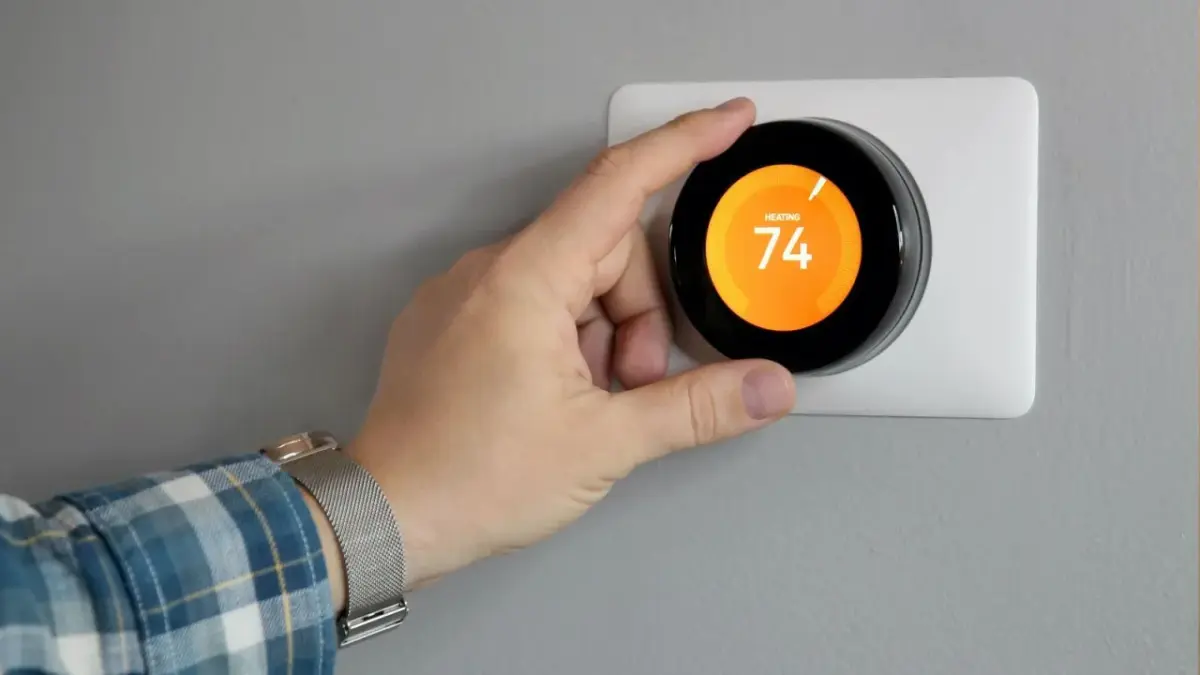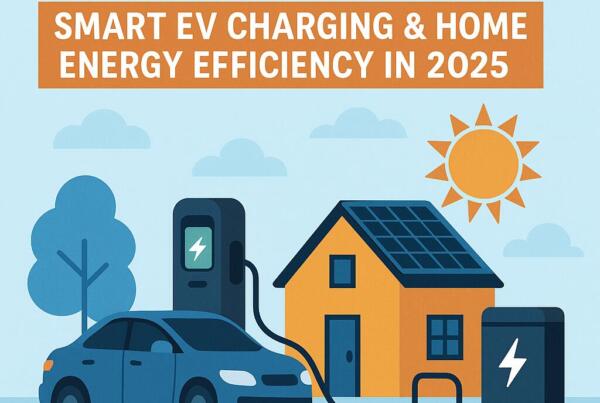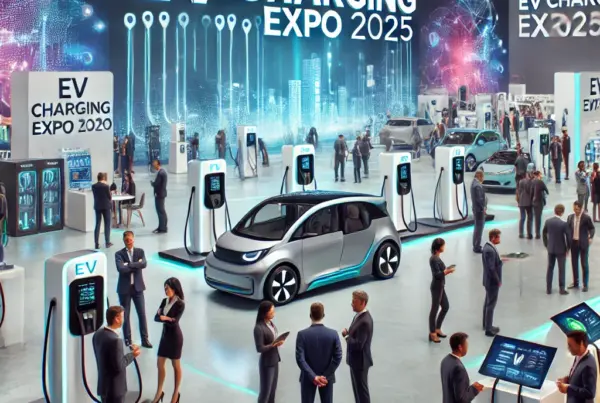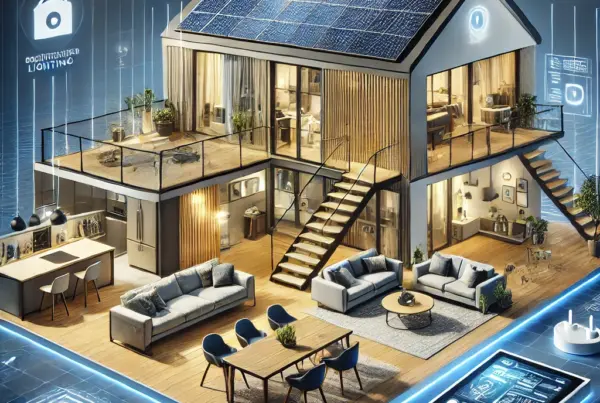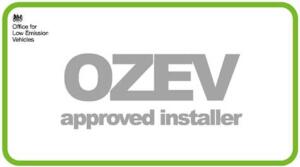Smart Thermostats: Revolutionising Energy Efficiency for Homes and Businesses
In the era of smart technology, homes and businesses are becoming increasingly connected and efficient. Among the various smart devices, smart thermostats stand out for their ability to revolutionise heating and cooling systems, leading to significant energy savings. This blog explores how smart thermostats work, their benefits, and how they can optimise energy usage.
What Are Smart Thermostats?
Smart thermostats are advanced temperature control devices that connect to your heating, ventilation, and air conditioning (HVAC) systems. Unlike traditional thermostats, which require manual adjustments, smart thermostats can be controlled remotely via smartphones, tablets, or computers. They use sensors, Wi-Fi connectivity, and algorithms to learn your habits and preferences, adjusting the temperature automatically to optimise comfort and energy efficiency.
How Do Smart Thermostats Work?
Smart thermostats function through a combination of modern technologies:
1. Learning Algorithms
Many smart thermostats, such as the Nest Learning Thermostat, use machine learning to understand your schedule and preferences. Over time, they predict when you’re likely to be home or away and adjust the temperature accordingly.
2. Remote Control
Through apps, users can control their thermostat from anywhere with an internet connection. This means you can adjust the temperature before you arrive home, ensuring comfort without wasting energy.
3. Geofencing
Some smart thermostats use geofencing technology to track your smartphone’s location. When you leave a pre-set perimeter around your home, the thermostat switches to an energy-saving mode, and when you return, it adjusts to your preferred temperature.
4. Sensors
Smart thermostats often include motion and occupancy sensors to detect when people are present in the home. This data helps the thermostat make real-time adjustments to maintain comfort while minimising energy use.
5. Integration with Other Smart Devices
Smart thermostats can be integrated with other smart home devices such as smart lights, locks, and voice assistants like Amazon Alexa or Google Assistant. This integration enhances convenience and creates a more cohesive smart home experience.
Benefits of Smart Thermostats
1. Energy Savings
One of the primary benefits of smart thermostats is their potential for energy savings. According to the Energy Saving Trust, heating accounts for about 55% of a household’s energy bills in the UK. Smart thermostats help reduce this cost by ensuring that heating and cooling systems only operate when necessary. For example, the Nest Learning Thermostat claims to save users up to 15% on cooling and 10-12% on heating annually.
2. Increased Comfort
Smart thermostats provide a higher level of comfort by maintaining a consistent temperature based on your preferences. Whether you like a warm home in the winter or a cool environment in the summer, smart thermostats ensure your home is always at the perfect temperature when you’re there.
3. Remote Access
The ability to control your thermostat remotely is a significant advantage, especially for those with unpredictable schedules. You can adjust the temperature while you’re away, ensuring you return to a comfortable home without wasting energy.
4. Environmental Impact
By optimising energy use, smart thermostats contribute to reducing your carbon footprint. Efficient energy usage means less reliance on fossil fuels and lower greenhouse gas emissions, making smart thermostats a small but meaningful step towards environmental sustainability.
5. Detailed Energy Reports
Many smart thermostats provide detailed energy reports, showing how much energy you’ve used and offering insights into how you can save more. These reports help you understand your energy consumption patterns and identify areas for improvement.
How Smart Thermostats Optimise Heating and Cooling
1. Learning Your Schedule
Smart thermostats use algorithms to learn your daily routines. They can determine when you’re likely to be home or away and adjust the temperature accordingly. This means your heating and cooling systems aren’t running when they don’t need to be, saving energy and money.
2. Zoning
Some advanced smart thermostats offer zoning capabilities, allowing you to set different temperatures for different areas of your home. This is particularly useful for larger homes where some rooms are used more frequently than others. By only heating or cooling the rooms in use, you can significantly reduce energy waste.
3. Adaptive Recovery
Adaptive recovery ensures your home reaches the desired temperature by the time you’ve scheduled. For example, if you set your thermostat to warm your home by 7 a.m., the thermostat calculates how long it will take to reach that temperature and starts heating accordingly. This feature optimises energy use while ensuring comfort.
4. Integration with Weather Forecasts
Smart thermostats can access local weather forecasts to make adjustments based on external conditions. If a cold snap is expected, the thermostat can pre-heat your home, ensuring comfort without overworking the heating system when the temperature drops.
5. Maintenance Alerts
Smart thermostats can also alert you when it’s time to perform maintenance on your HVAC system, such as changing filters or scheduling professional inspections. Regular maintenance ensures your system operates efficiently, preventing energy waste and costly repairs.
Types of Homeowners Who Can Apply for Grants
In the UK, various grants and incentives are available to help homeowners install energy-saving devices like smart thermostats. The eligibility criteria for these grants vary, but generally include:
1. Homeowners Living in a Flat
Those who own and live in a flat can apply for grants to improve their home’s energy efficiency.
2. Renters
Renters can also benefit from grants, especially if they have permission from their landlords to make energy efficiency improvements.
3. Landlords
Landlords can apply for grants to make their rental properties more energy-efficient, which can make them more attractive to tenants.
Questions to Consider
Before purchasing a smart thermostat, homeowners often have several questions. Here are three common ones:
1. Will a smart thermostat work with my current HVAC system?
Most smart thermostats are compatible with standard HVAC systems, but it’s important to check compatibility before purchasing. Some older systems may require additional wiring or adaptors.
2. How difficult is it to install a smart thermostat?
Installation can be straightforward for those comfortable with basic DIY tasks. However, professional installation is recommended if you’re unsure about the wiring or have a complex HVAC system.
3. Can smart thermostats save money on energy bills?
Yes, smart thermostats can lead to significant savings by optimising heating and cooling based on your schedule and preferences. Studies and user reports often show noticeable reductions in energy costs.
Conclusion
Smart thermostats represent a significant advancement in home automation and energy efficiency. By learning your habits, providing remote access, and integrating with other smart devices, they offer a convenient and effective way to manage your home’s heating and cooling. The energy savings, increased comfort, and environmental benefits make smart thermostats a worthwhile investment for any homeowner.
Investing in a smart thermostat can enhance your living environment while contributing to a more sustainable future. With the potential to reduce energy bills and carbon footprints, smart thermostats are a smart choice for those looking to make their homes more efficient and eco-friendly.
Frequently Asked Questions
1. How do smart thermostats enhance energy efficiency compared to programmable thermostats?
Smart thermostats offer significant advancements over traditional programmable thermostats by using machine learning and adaptive algorithms. Unlike programmable thermostats, which require users to manually set schedules, smart thermostats automatically learn your habits and preferences, adjusting temperatures accordingly. They also incorporate real-time data such as occupancy sensors and weather forecasts, allowing for more precise and efficient temperature control. This leads to greater energy savings as the system operates only when needed and at optimal settings.
2. What are the potential challenges or downsides of installing a smart thermostat?
While smart thermostats offer numerous benefits, there are potential challenges to consider. Compatibility with older HVAC systems can be an issue, potentially requiring additional adaptors or wiring. Initial costs can be higher compared to traditional thermostats, although long-term savings often offset this expense. Some users might face a learning curve in understanding and using the advanced features. Additionally, as these devices rely on Wi-Fi connectivity, they are susceptible to network issues or cybersecurity risks. Regular updates and secure network practices are essential to mitigate these risks.
3. Can smart thermostats be integrated into larger home automation systems?
Yes, smart thermostats can be seamlessly integrated into larger home automation systems. They are designed to work with various smart home platforms such as Amazon Alexa, Google Assistant, and Apple HomeKit. This integration allows for coordinated control of multiple devices, enhancing convenience and energy efficiency. For instance, a smart thermostat can work in conjunction with smart blinds to optimize indoor temperature based on sunlight exposure, or with smart locks to adjust heating and cooling based on occupancy. This interconnected ecosystem provides a more comprehensive approach to home automation and energy management.

